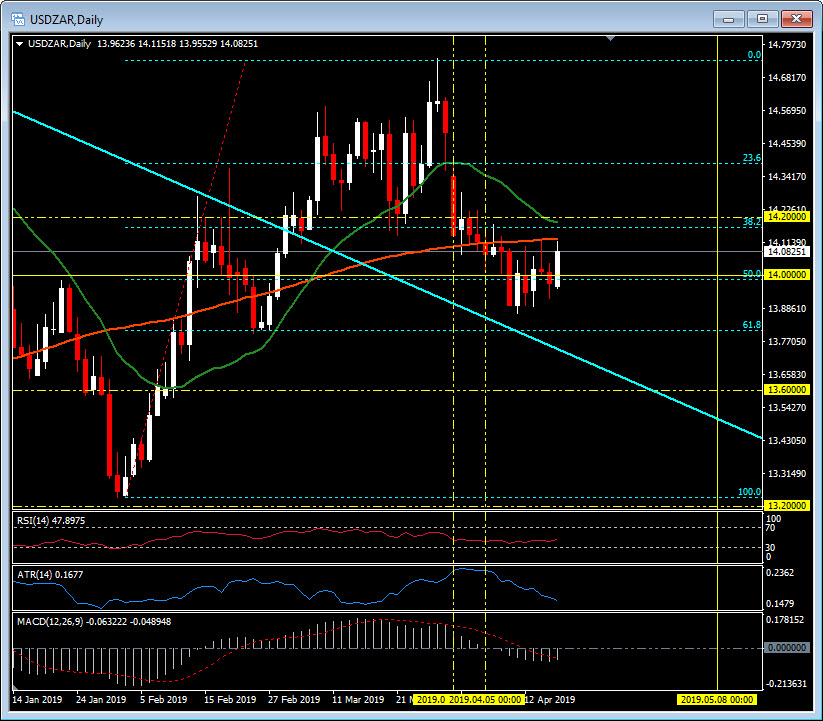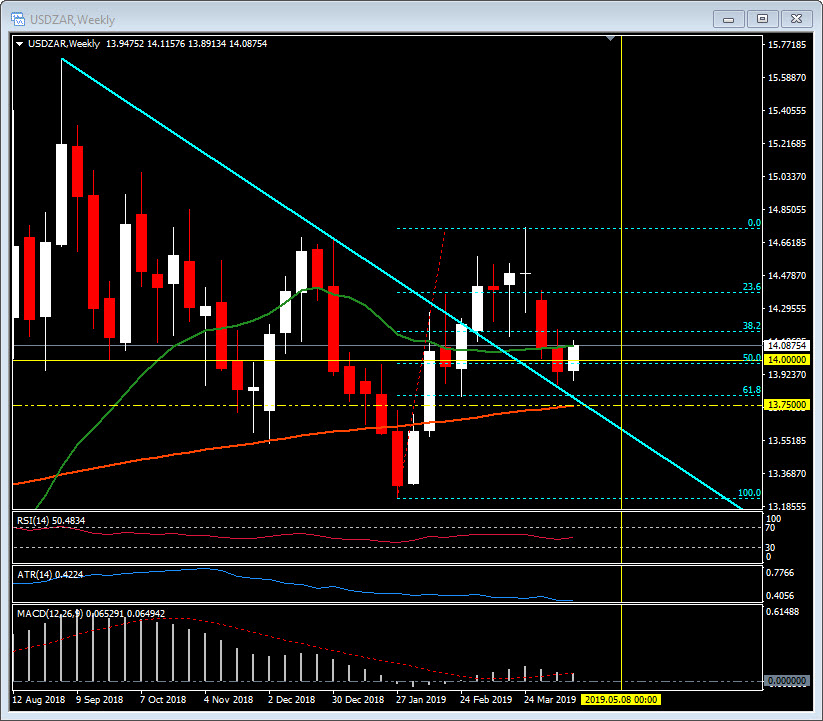USDZAR, Daily
South Africa goes to the polls on May 8 to elect a new National Assembly and new members in each province. The economy continues to be centre stage with corruption, power cuts and the long shadow of former President Jacob Zuma still hanging over affairs. The economy slipped into recession during 2018, growing at a lack lustre 0.8% for the whole year. Growth slipped to only 1.4% in quarter four having been as high as 2.6% during the third quarter. Annual GDP growth in 2017 was 1.4% and has been under 2% per annum since 2013. Unemployment remains stubbornly high at over 27% and with a growing population (36% of whom are under 25) the economy would need to grow at 5-6% per annum to reduce unemployment to 10%¹. With Inflation (currently at 4.1%) and interest rates at 6.75% the new President, Cyril Ramaphosa, has struggled to improve economic activity. However, there has been a significant increase in foreign direct investment to $7bln in 2018 from only 1.3bln in 2017 and South Africa remains the largest sub-Saharan African economy.
Politically and economically, ESKOM, the state-owned monopoly power supplier which needed a $5bn bailout to avert a debt mountain default, remains a thorn in the new Presidents side. Weeks of rolling power-cuts have further undermined the utility and calls for its break up and ultimate privatization have been increasing. The Eskom saga will be a key issue in the upcoming elections.
Technically, the South African Rand (ZAR) has had a “turnaround” in April 2019. The bullish Q1 run for USDZAR from January’s low at 13.2300 through to the March 28 high at 14.7462 has already retraced to test 14.0000. The 20-day moving average was breached April 1 and the 200-day moving average & the the MACD 0 Line, four trading days later. The next downside support is 13.7500 which represents the 61.8 Fibonacci level of the Q1 bullish move and also the higher time frame Weekly 200-period moving average. 13.6000 and the 2019 low at 13.2305 are the next support levels. To the upside, a breach of the now converging 20 and 200-day moving averages and the 38.2 Fibonacci level around 14.2000 represents a key resistance zone. The key 14.0000 pivot is likely to be important as polling day approaches.
Stuart Cowell
Head Market Analyst
Disclaimer: This material is provided as a general marketing communication for information purposes only and does not constitute an independent investment research. Nothing in this communication contains, or should be considered as containing, an investment advice or an investment recommendation or a solicitation for the purpose of buying or selling of any financial instrument. All information provided is gathered from reputable sources and any information containing an indication of past performance is not a guarantee or reliable indicator of future performance. Users acknowledge that any investment in FX and CFDs products is characterized by a certain degree of uncertainty and that any investment of this nature involves a high level of risk for which the users are solely responsible and liable. We assume no liability for any loss arising from any investment made based on the information provided in this communication. This communication must not be reproduced or further distributed without our prior written permission.





















